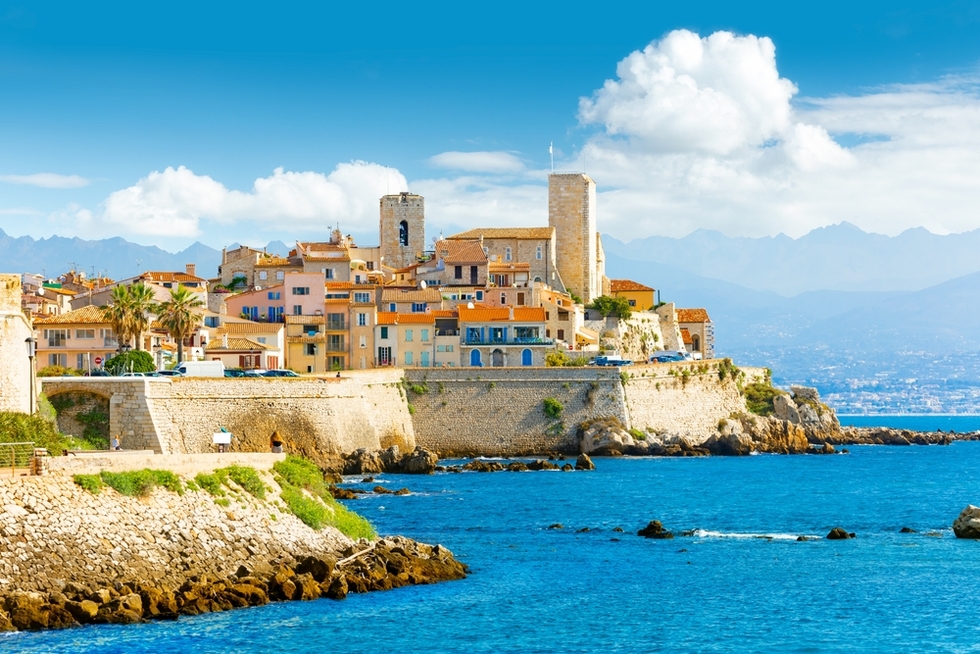913km (567 miles) S of Paris; 21km (13 miles) SW of Nice; 11km (7 miles) NE of Cannes
Antibes has a quiet charm unique to the Côte d’Azur. Fishing boats and pleasure yachts fill its harbor. The likes of Picasso and Monet painted its oh-so-pretty streets, today thronged with promenading locals and well-dressed visitors. A pedestrianized town center makes it a family-friendly destination as well, and a perfect place for an evening stroll. An excellent covered market is also located near the harbor, open every morning except Mondays.
Antibes has long possessed a liberal edge. The Vieille Ville's western quarters are made up of the Commune Libre de Safranier—the Free Commune of Safranier. Residents in this artsy enclave have adopted the motto: "Je ne crains rien, je n'espère rien, je suis libre", which translates as “I fear nothing, I hope for nothing, I'm free.” Safranier’s warren of lanes is filled with flower boxes and alfresco art. The town’s open-mindedness is seen in the giant meditating statue by Catalan artist Jaume Plensa, which looks out endlessly to sea from underneath the Musée Picasso.
On the other side of the Baie des Anges (Bay of Angels), across from Nice, Antibes and neighboring Cap d’Antibes (along with Juan-les-Pins) boast the best natural-sand beaches on the French Riviera. In 1923, these resorts became the Riviera's first summertime playground when the Grand Hôtel du Cap (now the Hôtel du Cap Eden-Roc) stayed open all year round, attracting guests as illustrious as Cole Porter and F. Scott Fitzgerald. There are five ports here, including Antibes's Port Vauban—the largest yachting port in Europe.
Antibes is famous for having been home to Picasso and for the young, yachting crowd who hang out in its bars and restaurants. Spiritually, Antibes is totally divorced from Cap d’Antibes, a peninsula studded with the villas of the super-rich. But the less affluent are welcome to peek at paradise, and a lovely 6km (3.75 miles) coastal path rings the headland, passing picnic and diving spots en route.









